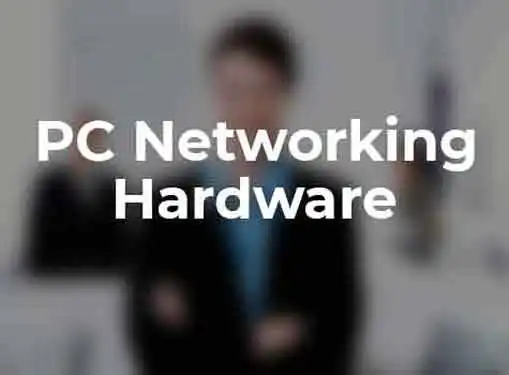Networking Equipment
PC Networking Hardware
Just because your computer isn't set up for networking doesn't mean you are out of luck. Network Interface Cards can be added to computers and laptops to give them access to your office network. Here's how to do it . . .
Office networking is a big plus for a small business workplace.

The idea of connecting your company's technological assets opens new opportunities for sharing files, devices and even applications. But many small business owners see networking as cost-prohibitive, based on the mistaken idea that a network entails new computers and hardware requirements.
Some network installations will necessitate significant technology infrastructure upgrades. But a basic small business network can often be accomplished using your operation's existing technological assets. Network Interface Cards (NICs) make it possible to convert disconnected devices into a simple networking environment.
Before you begin the process of installing an office network, it's important to understand the functions you will ask your network to perform. Some functions have advanced hardware and software requirements. But if you decide that a basic network will suffice, here is the PC networking hardware information you'll need to convert your current PCs into a networked environment.
- Ethernet technology. Ethernet is the standard technology platform for office networks. It is designed to easily connect NICs that have been installed on individual computers and many newer computers come with built-in Ethernet networking capabilities.
- Cabling options. Connections between NICs are usually accomplished with special cables. Coaxial (coax) cable connects devices in a "daisy chain" with adapters plugged into each NIC. This is a simpler cabling option because it doesn't require a hub, but it isn't suitable for large LANS. Twisted pair (UTP) cabling uses jacks and connects NICs to a hub, modem or router. Large LANS demand UTP cable, and typical run wiring through walls and ceilings.
- Network software. Windows 98/XP operating systems have preinstalled software components to facilitate the creation of an office network. Once you have taken care of your PC networking hardware requirements, install drivers using Windows 98/XP procedures and the disk that was supplied by your NIC manufacturer. Then select "networks" in your PC control panel and choose the proper configurations.
- Peer vs. server networks. Peer networks have the most basic network configurations. Server networks have increased functionality, but require additional hardware and software components, including a machine that is a dedicated network server. Consult with your IT technician to discuss your options before you make any significant network hardware investments.
Share this article
Additional Resources for Entrepreneurs


Conversation Board
We greatly appreciate any advice you can provide on this topic. Please contribute your insights on this topic so others can benefit.